My goal is to convert a PyTorch Model into a quantized tflite model that can be used for inference on the Edge TPU.
I was able to convert a fairly complex depth estimation model from PyTorch to tflite and I successfully ran it on the Edge TPU. But because not all operations were supported, inference was pretty slow (>800ms).
Number of operations that will run on Edge TPU: 87
Number of operations that will run on CPU: 47
Because I want a model that runs fully on the TPU, I tried converting the simplest model I could think of, a MobilenetV2 classification model. But when running the quantized model, I get strangely inaccurate results.
| PyTorch | TFLite |
|---|---|
| Samoyed:0.8303 | missile: 0.184565 |
| Pomeranian: 0.06989 | kuvasz: 0.184565 |
| keeshond: 0.01296 | stupa: 0.184565 |
| collie: 0.0108 | Samoyed: 0.184565 |
| Great Pyrenees: 0.00989 | Arctic fox: 0.184565 |
Is this caused by quantizing the model from float32 to uint8 or am I doing something wrong? And if it is caused by quantization, how can I mitigate that? The classification example from corral works fine and, as far as I know, is uses the same model.
Conversion Process
PyTorch -> ONNX -> OpenVINO -> TensorFlow -> TensorFlowLite
I wrote my own code to convert the model from PyTorch to ONNX and from TensorFlow(pd) into TFlite. For the other conversion steps, I used the OpenVINO mo.py script and the openvino2tensorflow toll because of the nchw nhwc mismatch between PyTorch and TensorFlow.
Downloads
Depth Estimation Model: https://github.com/AaronZettler/miscellaneous/blob/master/mobilenet_v2_depth_est.pth?raw=true
Classification Model: https://github.com/AaronZettler/miscellaneous/blob/master/mobilenetv2.tflite?raw=true
Labels: https://raw.githubusercontent.com/pytorch/hub/master/imagenet_classes.txt
Image: https://raw.githubusercontent.com/pytorch/hub/master/images/dog.jpg
Code
This code does not require the Edge TPU to be run, but it does require the google coral libraries. If I use different parameters for mean and std, like (2.0, 76.0), I get a solid result for the dog.jpg image but if I try to classify something else I have the same problem.
import numpy as np
from PIL import Image
from pycoral.adapters import classify
from pycoral.adapters import common
from pycoral.utils.dataset import read_label_file
from torchvision import transforms
from tensorflow.lite.python.interpreter import Interpreter
def cropPIL(image, new_width, new_height):
width, height = image.size
left = (width - new_width)/2
top = (height - new_height)/2
right = (width + new_width)/2
bottom = (height + new_height)/2
return image.crop((left, top, right, bottom))
def softmax(x):
e_x = np.exp(x - np.max(x))
return e_x / e_x.sum()
def classify_img(image_dir, lables_dir, model_dir, mean, std):
#loading lables and model
labels = read_label_file(lables_dir)
interpreter = Interpreter(model_path=model_dir)
interpreter.allocate_tensors()
#load an resize image
size = (256, 256)
image = Image.open(image_dir).convert('RGB')
image = image.resize(((int)(size[0]*image.width/image.height), size[1]), Image.ANTIALIAS)
image = cropPIL(image, 224, 224)
image = np.asarray(image)
#normalizing the input image
params = common.input_details(interpreter, 'quantization_parameters')
scale = params['scales']
zero_point = params['zero_points']
normalized_input = (image - mean) / (std * scale) + zero_point
np.clip(normalized_input, 0, 255, out=normalized_input)
#setting the image as input
common.set_input(interpreter, normalized_input.astype(np.uint8))
#run inference
interpreter.invoke()
#get output tensor and run softmax
output_details = interpreter.get_output_details()[0]
output_data = interpreter.tensor(output_details['index'])().flatten()
scores = softmax(output_data.astype(float))
#get the top 10 classes
classes = classify.get_classes_from_scores(scores, 5, 0.0)
print('-------RESULTS--------')
for c in classes:
print('%s: %f' % (labels.get(c.id, c.id), c.score))
image_dir = 'data/dog.jpg'
lables_dir = 'data/imagenet_classes.txt'
model_dir = 'models/mobilenetv2.tflite'
classify_img(image_dir, lables_dir, model_dir, 114.0, 57.0)
To run the PyTorch model on google colab I had to replace
model = torch.hub.load('pytorch/vision:v0.9.0', 'mobilenet_v2', pretrained=True)
with
model = torchvision.models.mobilenet_v2(pretrained=True)
to make it work.
This is the code I used to test The PyTorch model on my machine.
import torch
from PIL import Image
from torchvision import transforms
import torchvision
import numpy as np
import matplotlib.pyplot as plt
def inference(model, input_image, lables_dir):
preprocess = transforms.Compose([
transforms.Resize(256),
transforms.CenterCrop(224),
transforms.ToTensor(),
transforms.Normalize(mean=[0.485, 0.456, 0.406], std=[0.229, 0.224, 0.225]),
])
input_tensor = preprocess(input_image)
input_batch = input_tensor.unsqueeze(0)
# move the input and model to GPU for speed if available
if torch.cuda.is_available():
input_batch = input_batch.to('cuda')
model.to('cuda')
with torch.no_grad():
output = model(input_batch)
probabilities = torch.nn.functional.softmax(output[0], dim=0)
# Read the categories
with open(lables_dir, "r") as f:
categories = [s.strip() for s in f.readlines()]
# Show top categories per image
top5_prob, top5_catid = torch.topk(probabilities, 5)
result = {}
for i in range(top5_prob.size(0)):
result[categories[top5_catid[i]]] = top5_prob[i].item()
return result
def classify(image_dir, lables_dir):
model = torchvision.models.mobilenet_v2(pretrained=True)
model.eval()
im = Image.open(image_dir)
results = inference(model, im, lables_dir)
for result in results:
print(f'{result}: {round(results[result], 5)}')
classify('data/dog.jpg', 'data/imagenet_classes.txt')



